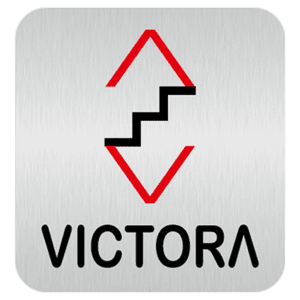Elevator and Escalator are the lifelines of today’s fast-paced multi-story buildings, making it easier, safer, and quicker to move from one level to another. Despite their ubiquitous presence, people often overlook the technicalities involved in the operation of these two systems.
This blog aims to provide a comprehensive guide to Elevator and Escalator, including their definition, working mechanism, types, comparisons, safety measures, and maintenance. So hold your breath and get ready to dive into the world of vertical transportation like never before!
Understanding Elevator
Elevators are mechanical lifts that provide vertical transportation for people and goods within a building. They operate through the use of an electric motor, which drives a system of traction cables and counterweights. When the motor runs, it pulls the elevator up, and when it stops, gravity takes hold, and the elevator goes down.
Elevators come in different types, including passenger elevators, freight elevators, hydraulic elevators, home elevators, hospital elevators, and many more. Each type is designed to meet specific user needs. For instance, passenger elevators are used in office buildings, apartments, and hotels, while hospital lifts are designed to transport patients on stretchers and wheelchairs.
Overall, elevators are a safe and convenient way to transport people and goods within a building. Thanks to technological advancements, lift or elevator have become an essential part of our daily lives, making our daily commute more comfortable and efficient.
Understanding Escalator
Escalators are the necessary “moving stairs” that carry people up and down between levels of a building. They are designed in a way where the stairs move in a cycle on a pair of tracks. The escalator consists of a motor-driven chain that moves the steps up and down. It’s interesting to note that escalators are power guzzlers as they have to operate continuously while elevators save electricity by consuming only when in operation.
Types of escalators include parallel, crisscross, spiral, and inclined. These types of escalators have different functionalities and designs depending on where they are used. For example, parallel escalators are designed for wider spaces such as malls and airports. On the other hand, spiral escalators are perfect for smaller spaces, whereas inclined escalators are ideal for outdoor spaces where most people are walking or standing.
Escalators are perfect for malls, metro and railway stations as they can carry more than 20 people at one time. However, patients and luggage cannot travel on escalators. Escalators don’t require a specific machine room to control the system of escalator, while elevators require a specific machine room to control the elevator.
Comparison between Elevator and Escalator
Elevator and Escalator are integral parts of modern-day architecture. They are used to move people and goods vertically inside buildings. However, there are some vital differences between elevator escalator, and below we address them in depth.
Functionality:
Elevators are enclosed cabins that transport people and goods up and down between levels of a building. They work on the principle of counterweights and traction cables. In contrast, escalators consist of a motor-driven chain fixed on an individual track that cycles on a pair of tracks, carrying people up or down the building.
Design:
Elevators come with endless designs, including cab size, door operation, and fixtures. Depending on the intended use, an elevator can hold a maximum of 10-15 people at once. On the other hand, escalators are designed as diagonal stairs with an incline, and their structure is exposed, making them easier to access and operate.
Usage:
While elevators are used in multi-story buildings like apartments, banks, and offices, escalators are common in public spaces such as railway stations, malls, airports, etc. Elevators offer privacy in terms of being in an enclosed cabin, while escalators offer open exposure to the surrounding environment.
Energy Consumption:
Elevators consume less power compared to the escalators. An elevator’s electricity consumption is only during its operation, while an escalator has to operate continuously, which accounts for higher energy consumption. Also, elevators have the advantage of having an emergency power backup, which escalators lack.
Safety Measures for Elevator and Escalator
Safety measures are of utmost importance for both elevator and escalator as they involve the transportation of people and goods vertically and horizontally. Any negligence can result in dire consequences, including fatalities. Elevators have several safety features such as door sensors, emergency stop buttons, and overload sensors. Passengers are also advised to stand still and refrain from using the elevator in case of an emergency.
Escalators also come equipped with emergency stop buttons, yellow demarcation lines, and step edges that light up to indicate their movement. It is strictly advisable to avoid wearing loose clothing near an escalator and keep a firm grip while holding any luggage. Proper usage of escalators can prevent a majority of potential accidents.
It is crucial to follow safety protocols and adhere to them while using lift and escalators. These measures can help prevent any untoward incidents and ensure a safe ride for everyone.
Elevator and Escalator Maintenance
Maintenance is a crucial aspect of ensuring that lift and escalator continue to operate at their best, and it’s essential that this be carried out regularly. Proper maintenance ensures not only the safety but also the durability of the elevator and escalator, which is critical, considering the number of people using them each day.
There are different types of maintenance required for lift and escalator. Preventive maintenance is carried out to prevent breakdowns, while corrective maintenance is done after a failure has occurred. Routine maintenance is necessary to ensure that the equipment is always in good working order.
Frequency of maintenance depends on the usage of the elevator and escalator. High traffic areas require more routine maintenance than low traffic areas. A routine maintenance schedule should include regular checks of the electrical and mechanical equipment, cleaning, and lubrication.
Remember, well-maintained elevator and escalator give a positive impression of the building owner, and keeping them in good shape is necessary to maintain the building’s value. So, don’t neglect maintenance!
Fun Facts and Interesting Stories
- The first elevator was invented in the 18th century by an English engineer named Thomas Newcomen. It was a steam-powered elevator that was used in mines.
- The first escalator was invented in the 19th century by an American engineer named Jesse Reno. It was a moving staircase that was used in department stores.
- The world’s fastest elevator is located in the Shanghai Tower in China. It can travel at speeds of up to 20.5 meters per second (67 feet per second).
- The world’s tallest elevator is located in the Burj Khalifa in Dubai. It travels 828 meters (2,717 feet) from the ground floor to the observation deck.
- The world’s longest escalator is located in the London Underground. It is 323 meters (1,063 feet) long and takes 2 minutes to travel from one end to the other.These are just a few of the fun facts and interesting stories about elevator and escalator. These everyday marvels are an essential part of our modern world, and they continue to evolve and improve over time.
Conclusion
Elevator and escalator are a vital part of our lives. They are ubiquitous, and we use them almost every day without giving much thought to them. However, it is essential to understand the difference between these two modes of transportation, their functionality, designs, usage, and energy consumption.
While both have their advantages and disadvantages that you must be aware of, safety measures and maintenance practices must be taken seriously. Always be alert and follow the safety guidelines when using lifts and escalators. Remember, it’s better to be safe than sorry.
FAQs
Where is the oldest elevator?
The oldest elevator in the world is located in the Otis Elevator Company’s museum in New York City. It was built in 1857 and is a hydraulic elevator.
What is the difference between lift and elevator?
The terms “lift” and “elevator” are often used interchangeably, but there is a slight difference between the two. A lift is a general term for any device that moves people or goods vertically. An elevator is a specific type of lift that is powered by electricity.
Can elevator be called escalator?
No, an elevator cannot be called an escalator. An elevator is a device that moves people or goods vertically in a shaft. An escalator is a moving staircase that moves people between different levels.
What is the principle of escalator?
The principle of escalator is the same as the principle of a conveyor belt. A pair of chains or belts loop around two pairs of gears and are connected to the steps. The gears rotate, which moves the steps up and down. The steps are spaced so that they form a continuous staircase.
What is the cost of elevator in India?
The cost of an elevator in India varies depending on the size, capacity, and features of the elevator. A small, residential elevator can cost around Rs. 5 lakhs, while a large, commercial elevator can cost upwards of Rs. 25 Lack.


